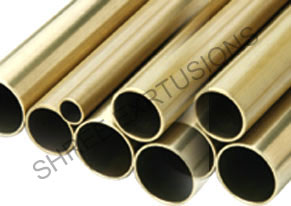Admiralty Brass Tube
Admiralty Brass Tubes are generally used with fresh, clean waters free from suspended abrasive solids and originating from rivers lakes and canals. It may also be used with brackish or even saline water. The inhibitive action of arsenic protects Admiralty Brass Tubes from dezincification and the fully annealed alloy can also withstand stress-corrosion cracking. In waters containing less than 2000 ppm dissolved solids its use is allowed at flow rates of up to 3 m/s (10 ft/s) in sea waters a maximum speed of 1 m/s (3,0 ft/ s) is recommended. The presences of tin improve resistance to general corrosion in slightly polluted (sulphurised) water.
Specifications:
| Admiralty Brass Tubes |
|
| Chemical Requirements | |
| Copper | 70.0 to 73.0% |
| Tin | 0.8 to 1.2% |
| Arsenic | 0.02 to 0.06% |
| Zinc | Remainder |
| Lead | 0.07% max. |
| Physical Properties | |
| Condition | Hardness |
| Annealed (O) | 75 max |
| Temper Annealed (TA) | 80 to 105 |
| As manufactured (M) | 150 min. |
| Further Tests | |
| Drift Test Flattening Test Microstructure Test MN Test Eddy Current Optiona Hydraulic Testl | |
| Uses | |
| Dezincification resistant brass, used in fresh water generally used in petroleum industry because of good corrosion resistant to sulphur bearing gases and cooling water. | |


